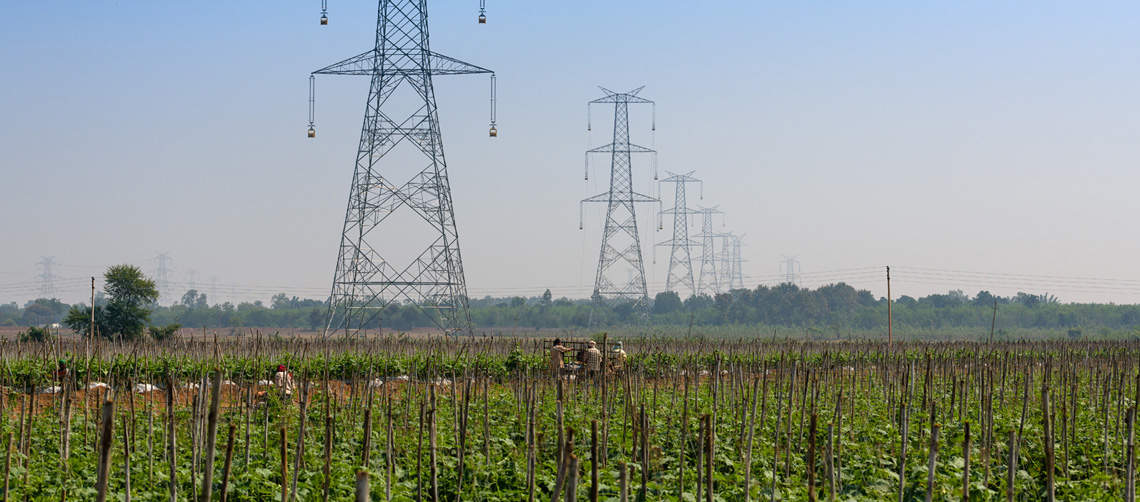The electricity sourced through Intercontinental Grid would be green, hence reducing the impact on the planet and addressing climate change.
Despite recent advances in electrification, around a billion people in the world are still without access to electricity. Of the 89% that do have access, many are without reliable supply. In 20th century, access to electricity has transformed societies globally and has become a fundamental right.
But can 24×7 power be a reality for every home globally, given several vagaries that seem difficult to solve for even the most dedicated of governments? Consider also, as all people potentially get connected to the grid round-the-clock, there will be an unprecedented increase in power demand. While fossil fuel-based power can service this to some extent, it will come at the obvious cost of climate change whose ill effects are being felt every day.
Energy from renewable sources such as solar and wind are the obvious solution, but they have their own problems; the sun doesn’t shine round the clock, and wind doesn’t blow all the time. In fact, at the time electricity demand peaks in the evening, the sun has already set.

Source: NLDC, IEEFA
One solution is to improve battery technology to store the surplus energy, but this is still a while away. There is another possible solution. After all, when the sun sets in India, it shines brightly over another country, which possibly receives more solar energy than is needed for its requirement at that moment. So that brings us to an interesting question — can one country’s sunshine light up homes in another country?
Connecting countries with power lines
At its essence, it sounds simple — power lines connecting various countries, potentially evolving into one giant global grid. This should not be unfathomable. After all, the world has already done this for telecom and internet connectivity. Under-sea internet cables transport gigabytes of data from one continent to another. Even thinking of physical goods, there are inter-continental oil pipelines, stretching as far as 4,000 km.
It might seem like the next logical step to have an inter-continental grid that leverages the time difference between countries to inject surplus renewable energy from one country’s grid to another who needs it. This is theoretically achieved by connecting the right points across the globe to service demand in others by following the sun or cyclicality of the renewable sources like wind.
For example, when India hits peak energy demand at around 6 PM, the sun is likely to be shining bright in the Arabian Gulf countries. The GCC (Gulf Coordination Committee) can feed India’s power demand through a sub-sea link from Oman to Porbandar in Gujarat.
If one does the math, it’s not very expensive, either. The cost of the GCC-India interconnection via sub-sea cable is estimated to be $3.5 billion dollars for a 3 GW link. The cost per unit of power transmitted over this link could be lower than ₹2 ($2.5 cents/unit) with innovative usage of this link for power transfer between countries.

You might be able to work out then, that when the sun shines brightly over India, the beneficiary will be eastward countries like Vietnam and Myanmar, not to mention morning peak demand in GCC countries.
It’s exciting to think of what this could lead to. This could pave the way for a new Green Power Corridor for the world along the sunshine tropical countries, much like how the ancient Silk Route helped establish East-West trade routes, and how the 21-km long Strait of Hormuz sees 20% of all the world’s oil passing through it.
For long, the world has been speaking of the power of Asia, this would be a way to literally manifest it. Not to mention, this will lead to increased diplomacy between all states concerned. It’s also exciting to think about how this could extend to other areas of the globe. Particularly the perennially under-electrified African countries, for which this could act as a vital source of revenue as well.
If we could connect all countries across the solar-blessed tropic of cancer, then India’s vision of establishing “One World, One Sun, One Grid” could come true. The sun would never set for any country.
What would the impact of this be?
An intercontinental grid brings with it several direct and indirect benefits.
Primary, of course, is complete electrification, everyone on the planet would have reliable 24*7 power. This brings with it socio-economic benefits to all – from providing education & entertainment to individuals, to boosting agriculture and industrial production, and providing impetus to trade and commerce related opportunities.
There are many counties which do not receive optimal sunlight. Hence, the only option for them is investment in fossil fuel-based power generation sources. With Intercontinental Grid, these investments can be directed to other critical sectors such as healthcare.
The electricity sourced through Intercontinental Grid would be green, hence reducing the impact on the planet and addressing climate change. Furthermore, this paves the way for stronger diplomatic relations between countries. India, with its potential for generating renewable power – solar, hydro and wind, stands to gain much in this regard as the harbinger of One World – One Grid.
And in 2020, the most powerful thing would be for barriers of all kinds to be broken down. That is the hope that a truly intercontinental grid brings with it.
Author:
Pratik Agarwal, Managing Director, Sterlite Power
Source: First published in Fortune India

 Please wait...
Please wait...